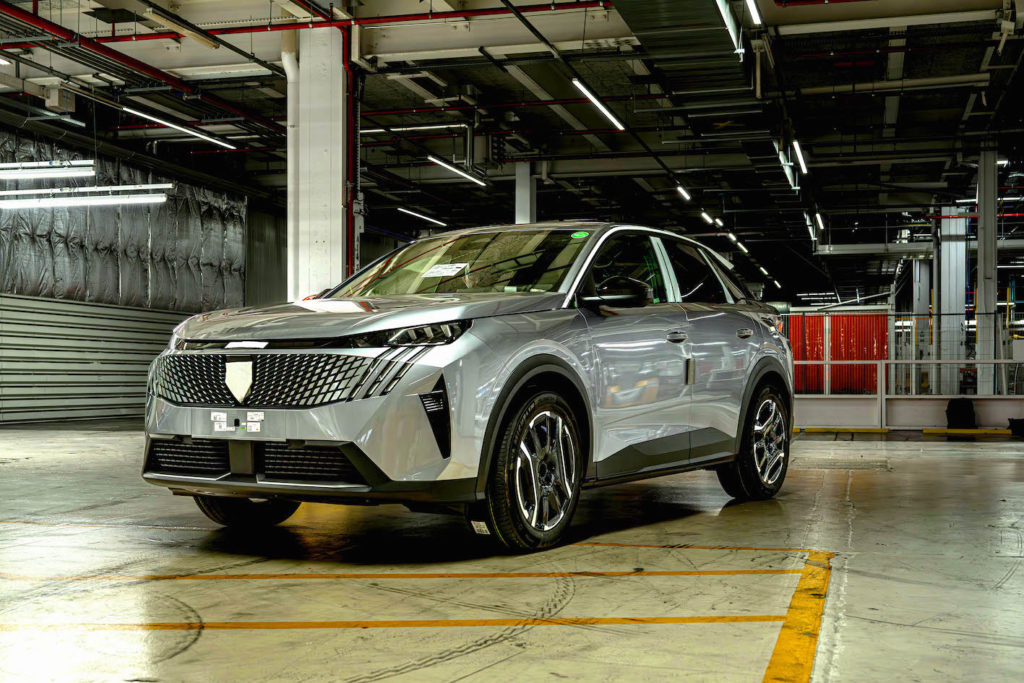

Finally unveiled! Peugeot waited until the close of the Munich Motor Show to reveal the definitive characteristics of the third generation of its 3008. The new model has changed direction, abandoning its family SUV silhouette in favour of a ‘fastback’ theme adapted to the world of SUVs. Strictly speaking, therefore, it is not an ‘SUV coupé’, even though its rivals do not hesitate to use the term. One example is the Volkswagen ID.5 below, which is based on the same concept as the 3008.
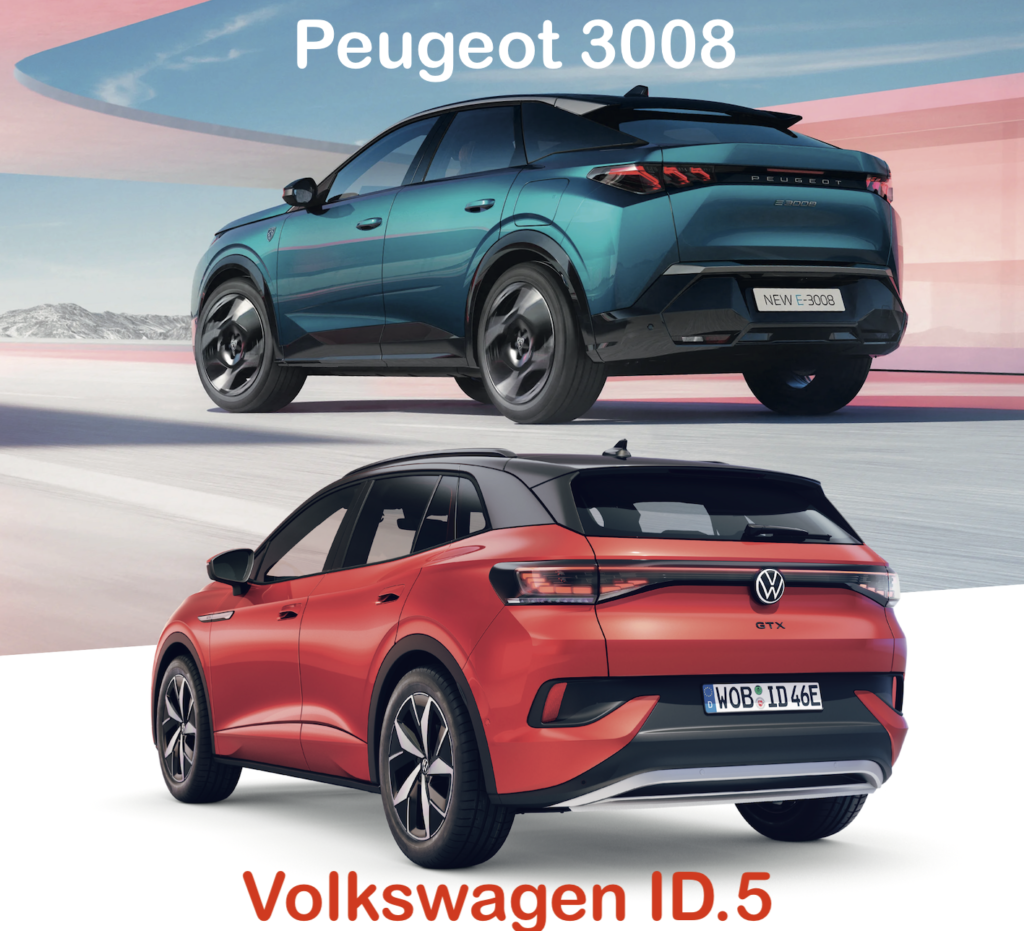
In terms of architecture, the trick has been to tilt the rear window sharply only from the hard point above the heads of the occupants in row 2. As a result, the only volume lost is that above the boot lid. The boot offers 520 litres, compared with 545 for Renault’s electric rival, the Scénic E-Tech. Yet the Scénic is less generous in size (4.47 m compared to 4.54 m for the Peugeot) and has a wheelbase 5 cm longer than the 3008. Surprising, given that the Peugeot has grown by almost 10 cm compared to the 2016 generation!
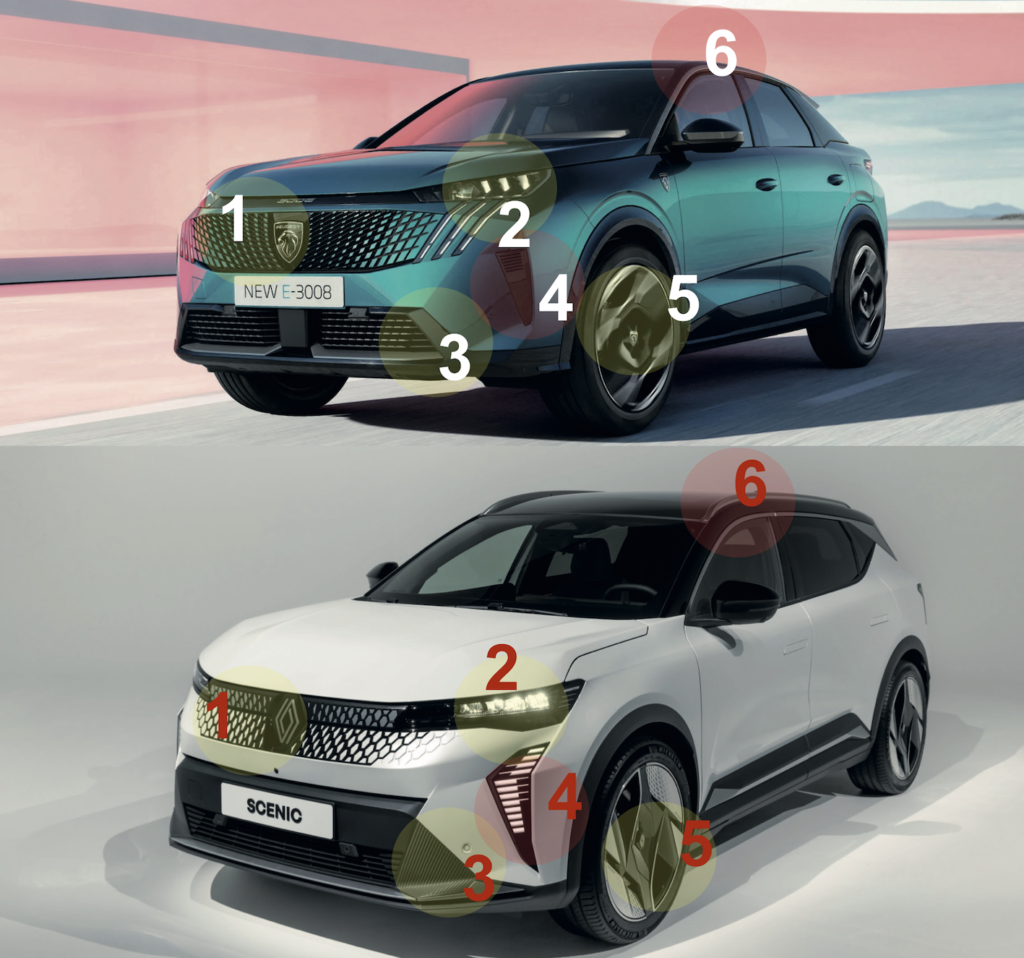
Above, this quick comparison reveals the similar styling elements between the two French models: Scénic and 3008. In 1, the undefined radiator grille originally created on the 308 designed during the Vidal era. In 2, the tapered, raised headlamps. In 3, the trapezoidal shape of the front bumper elements. In 4, the light signatures of the Renault are replaced on the Peugeot by scoops. In point 5, the wheels adopt a similar design, dictated by aerodynamic research. Only point 6 differentiates the two belligerents, with small roof bars on the Scénic and none on the 3008.

This point 6 is surprising because Renault has opted for a contained height (1.57 m), whereas the 3008 is 1.64 m tall. This does not prevent it from offering a Cx of 0.28. Nevertheless, its height is greater than that of the first Scénic in 1996, at 1.61 metres. And that was a minivan! But since then, the architects have had to make do with a good ten centimetres of thickness for the batteries housed in the floor (below).
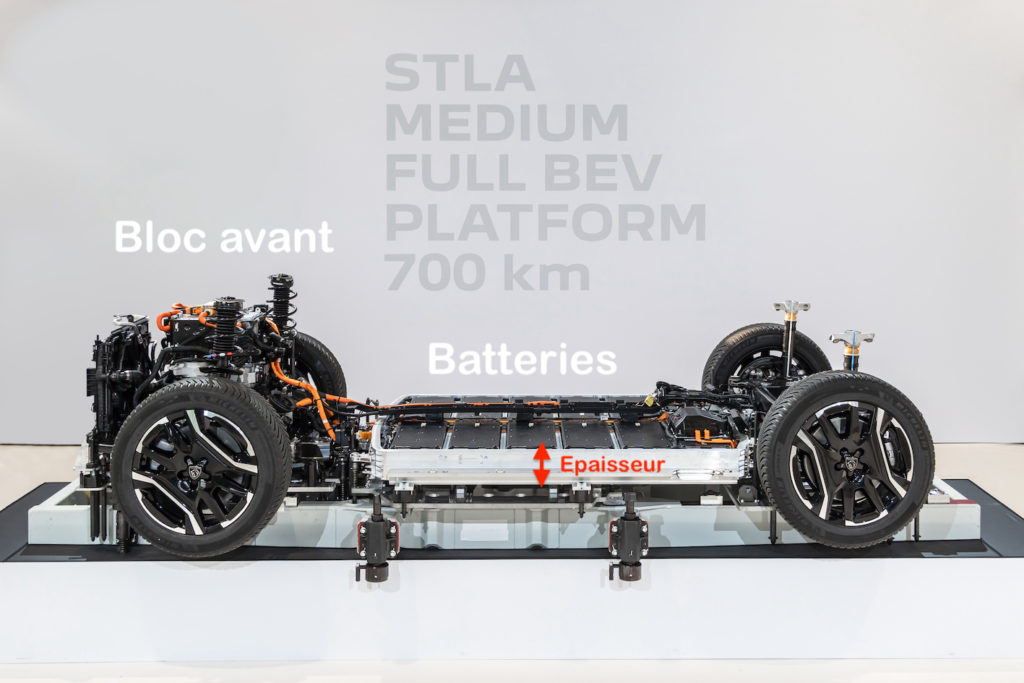
It’s easy to see why tomorrow’s cars will be taller and have bigger wheels. The 3008 is based on the new STLA Medium platform, which offers the same interior space and load capacity regardless of the electric powertrain used. The e-3008 version, which will go on sale in early February 2024, will be available in three variants: 210 bhp front-wheel drive with a 73 kWh battery and a range of 525 km, 230 bhp with a 98 kWh battery and the much-vaunted 700 km range, and a 320 bhp variant with a 73 kWh battery and a range of 525 km. But we’ll have to wait a long time for the long-range 700 km version. Until 2025, that is!
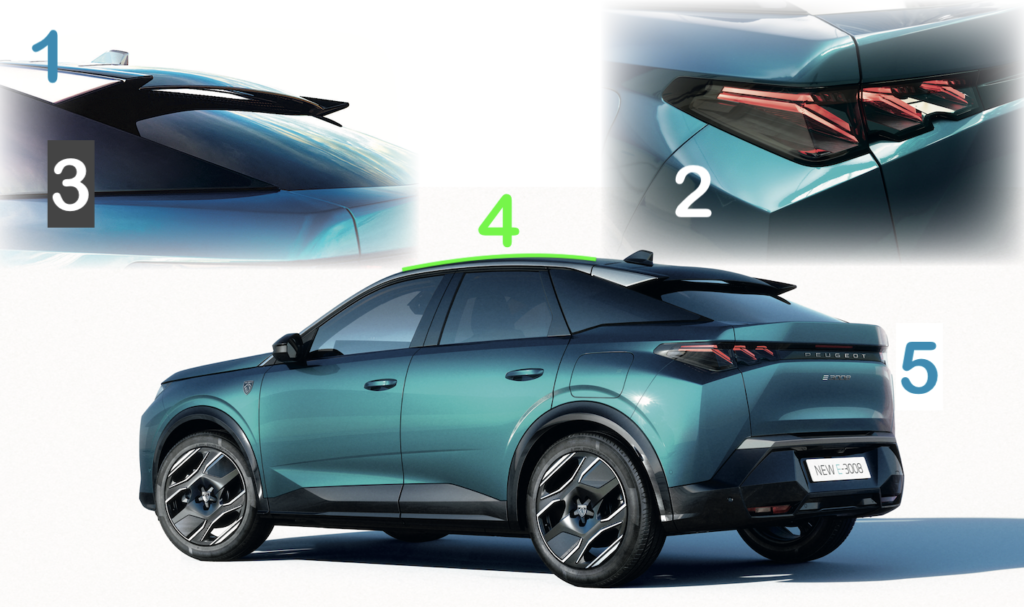
Let’s come back to the design, because the fastback theme, which does not (overly) detract from interior space, necessitated a few design tricks.As you can see, the roofline only drops after the hard point of the rear seats (at 4), but the impression of dynamism is still there.In 1, the line of the 3rd window can be seen dropping down, but the roof structure remains high and there is a floating spoiler at the end of the roof.In 2, the design of the wings protrudes widely, giving rise to vertical planes that help to improve the aerodynamics.In 3, the side window hides the seals, like those on the side windows, contributing to the streamlined design of the sides. In 5, as can be seen below, the Peugeot logo has disappeared from the stern…
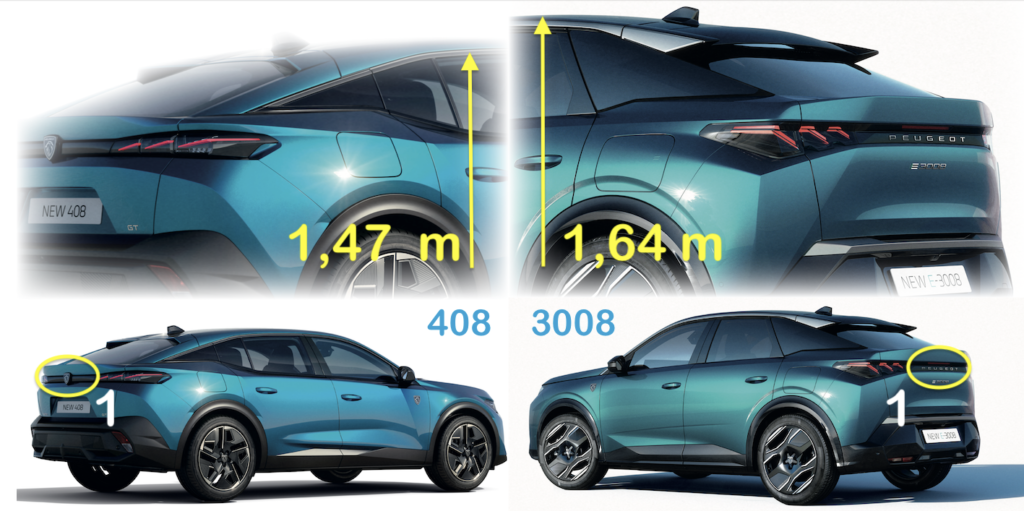
Compared to its big sister, the 408, the 3008 is considerably taller, but also considerably shorter. As a result, its proportions remain in line with those of crossovers.In 1, we notice that the new logo, present on the stern of the 408, has disappeared from that of the 3008.This is strange, because while the model name is displayed in large letters under the black band with the brand name, the logo has disappeared.This reminds us of the prevarications over the positioning of the ‘DS’ and ‘Citroën’ logos and the model when Citroën launched the DS3, DS4 and DS5 ‘DS line’.At the front, on the other hand, the 3008 model name has been moved from the bonnet to the strip between the headlights (below).
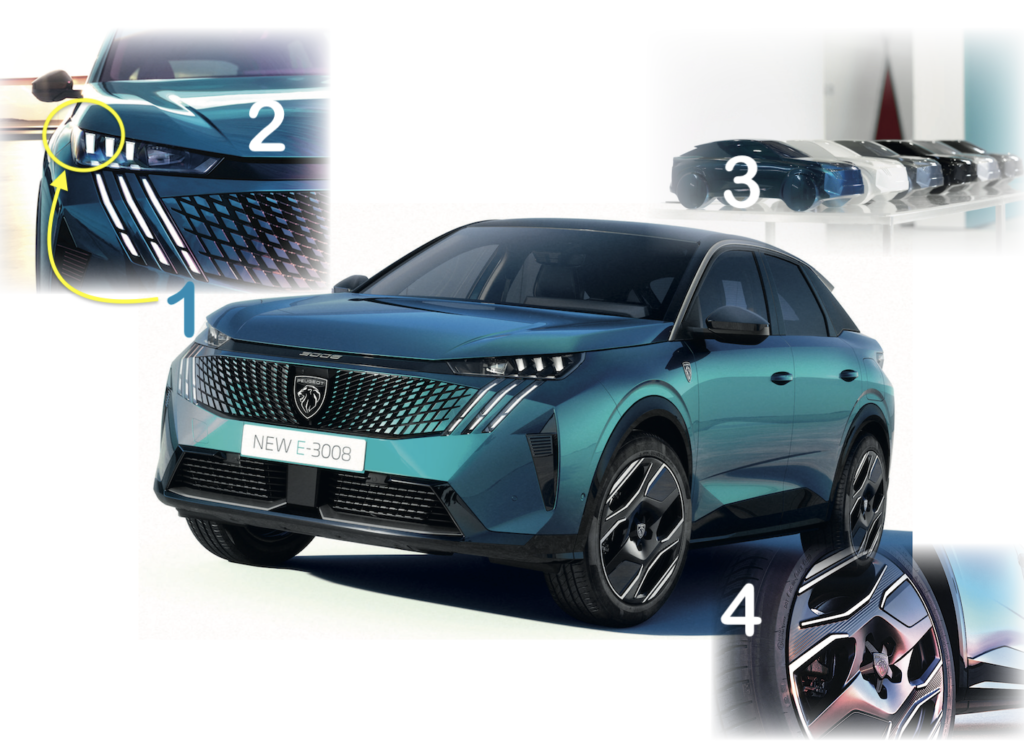
Above, point 1 is undoubtedly one of the most complex to master: it is the junction of the rounded bonnet with the more angular headlamps. In 2, the bonnet is no longer of the ‘coachbuilder’ type, but plunges down onto the black fascia, making it easier to control the assembly gaps, as there are none in this area!In 4, you can clearly see that the rims are almost full (for aero purposes), while the body colours (in 3) are not exactly a joy to behold: white, grey, black and blue.Like almost all the competition, alas.
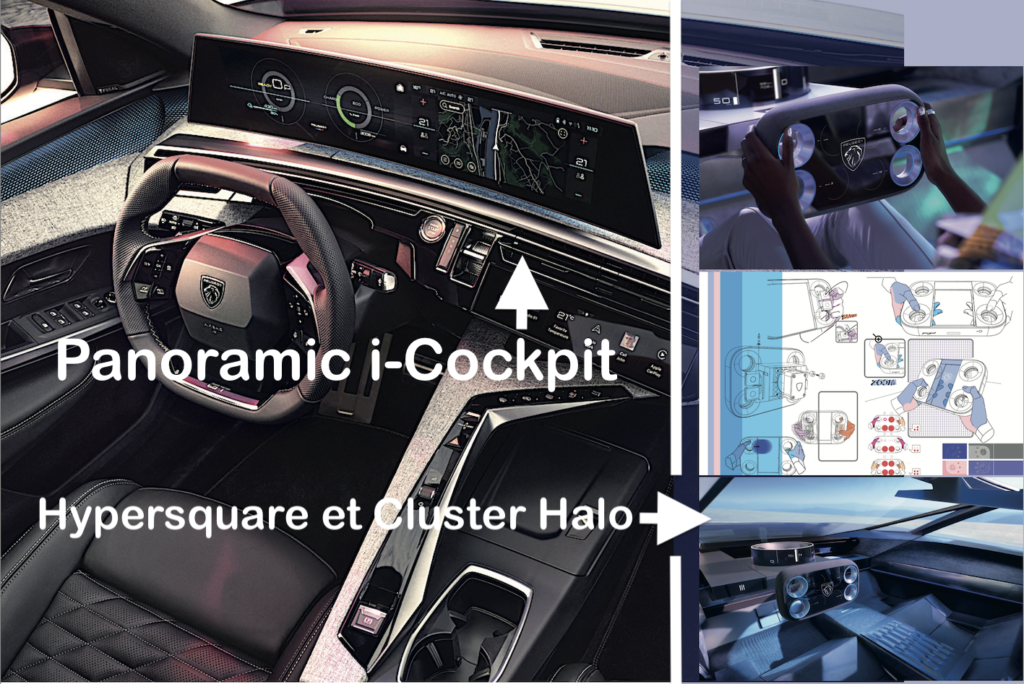
The Panoramic i-Cockpit on the left above is an innovation. This consists mainly of a 21-inch screen that is slightly oriented towards the driver and sits above the steering wheel.It incorporates touch controls on the right-hand side.But, you may ask, didn’t Peugeot present a brand new i-Cockpit on board its Inception concept car with its Hypersquare steering wheel (below) and its instrumentation via the Halo Cluster? Yes, and this concept has not been forgotten, as the 208 and 2008 of 2025/2026 are expected to adopt it. The Panoramic i-Cockpit will make the transition.
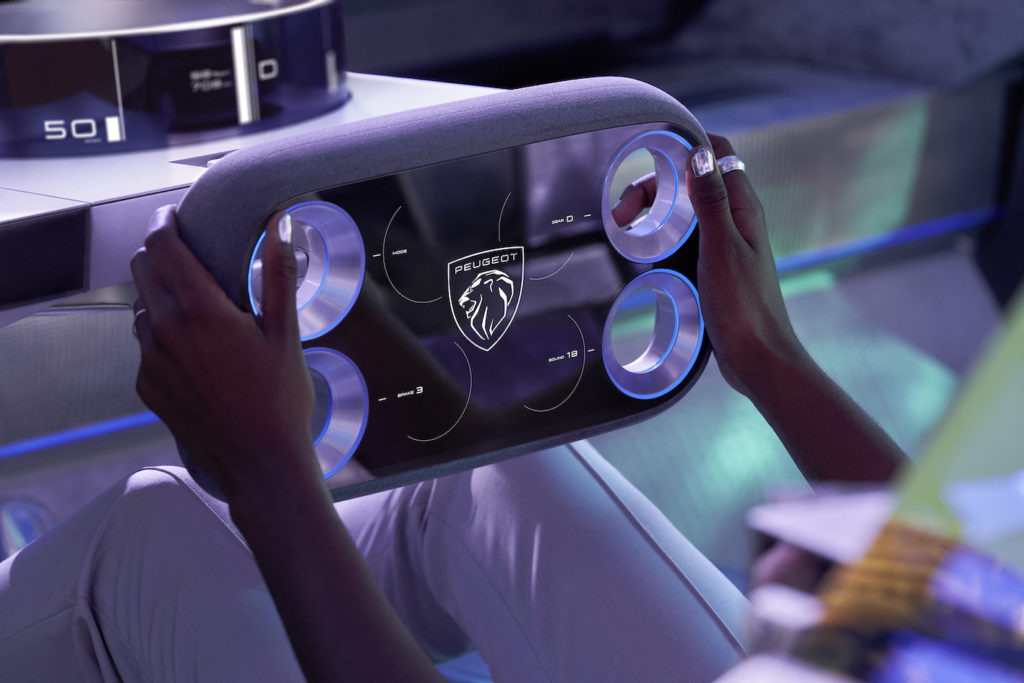
Like the Renault Scénic, produced in Douai, the 3008 will be made in France, in Sochaux (below). It will go on sale in February 2024. Peugeot says “as a complement to the strategy of 100% electrification of our range, we will market the 5008 large electric premium SUV – we are targeting a broader customer base of large SUV buyers – more details to come in early 2024.“
